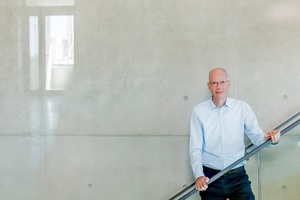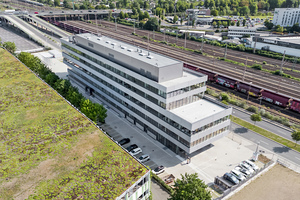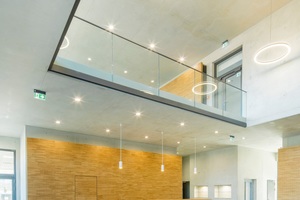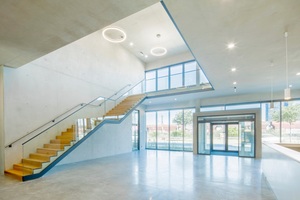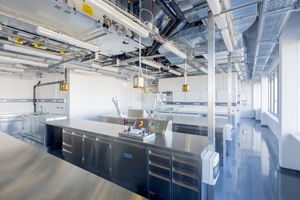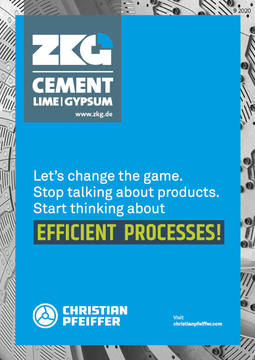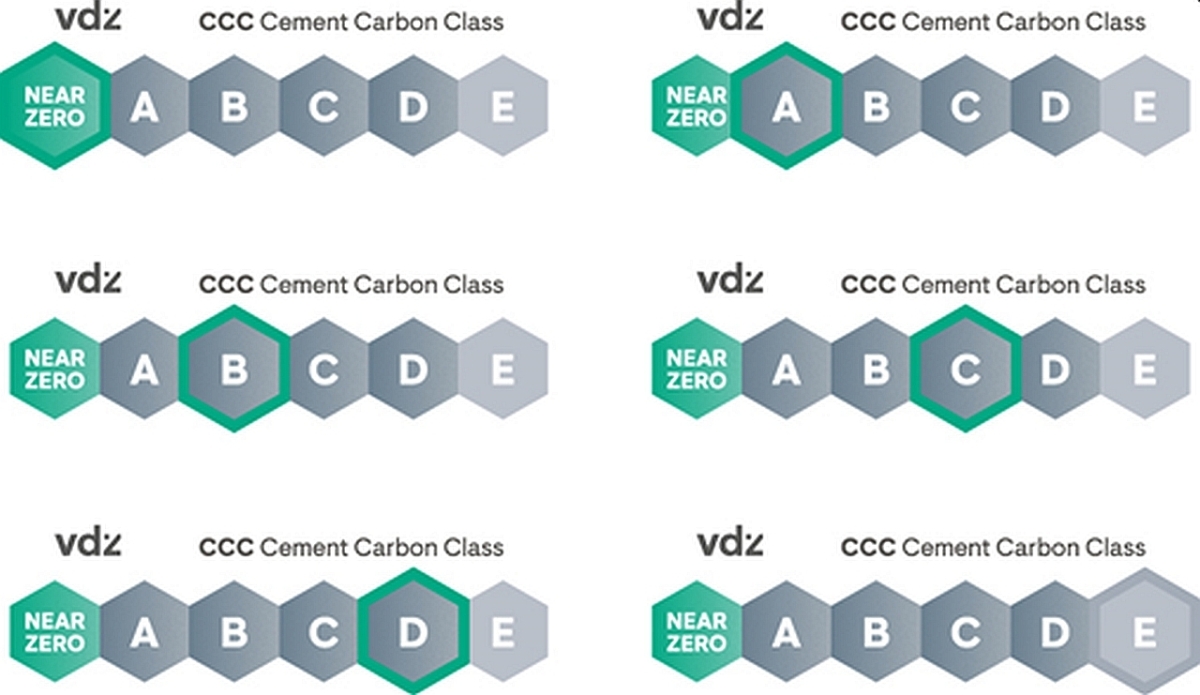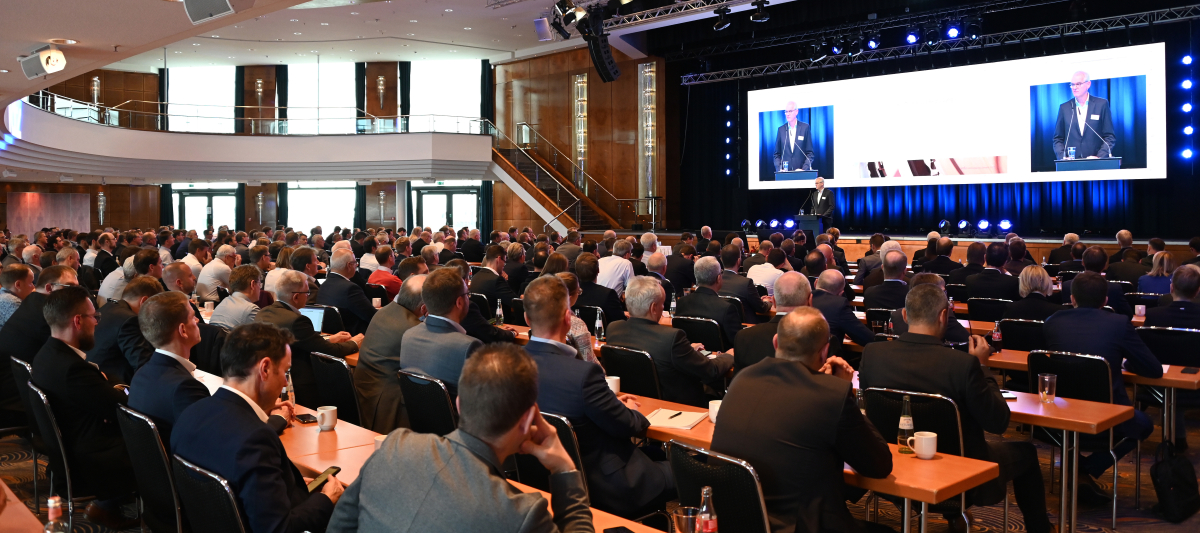A new milestone in the history of VDZ
For more than 60 years VDZ’s research institute in Duesseldorf has been the home and focal point not only for many generations of its employees but also for the representatives of the cement industry. Now, in the first week of September this year, VDZ has moved into new premises, a step which provides a new, long-time perspective. It is the consequence of the development of VDZ over the past decades and of its mission to continually evolve the well-established. Deeply rooted in the cement industry and with a strong, open-minded belief in solidarity, VDZ is well prepared to support the cement industry on its way to a low-carbon future.
In recent years VDZ’s existing building had begun to reach its limits. Infrastructure which needed to be renewed, insufficient space for laboratories, which prevented the optimisation of work flows, and finally not enough overall space for VDZ’s growing activities: These were the reasons which prompted the decision to build completely new premises.
VDZ’s new home is located close to its previous building, with excellent 15-minute connections to Duesseldorf’s airport and main station. It goes without saying that concrete plays an important role at the new location, not only with regard to the building materials, but also with respect to the architectural design. Reinforced and pre-stressed concrete was used for the five floors of the new institute. Significant parts of the building exhibit exposed concrete, in particular the entrance hall and the stairways. Cost-awareness was of very great importance. The overall amount of space is almost the same as in the former building, but the space efficiency is much higher and there is still room for growth. In order to allow the highest possible flexibility, the laboratories can in a long-term perspective be converted into offices and vice-versa.
Already at an early stage of the planning VDZ was very closely involved with the construction of the building. Employees of VDZ developed in particular a work flow for the laboratories, and VDZ itself took an important role in the project and subsequently the construction management. Here, VDZ’s expertise in cement and concrete was certainly of great help, but even more important was its excellent team spirit and strong desire to develop a building of high quality, long-term flexibility and operational efficiency. From a sustainability point of view it was important to have a low-carbon heat supply, which comes from a remote heat network powered by excess heat from the local municipal waste incinerator plant. The average clinker factor of the cements used was 50 %.
Moving into the new building goes hand-in-hand with a relaunch of VDZ’s branding. A new, slightly adapted corporate design underlines the development of VDZ in recent years. A new claim – “evolving the well-established” – was developed in which not only VDZ member companies were involved, but also customers and further stakeholders. It reflects VDZ’s vision to always rethink and further develop existing positions or even beliefs.
Already today the claim is developing a strong pull-effect: VDZ will continue to think ahead when it comes to the paramount challenge of decarbonising the cement industry.
VDZ has always further developed itself in the past decades. Today, with roughly 200 employees from 17 nations, its business model comprises three pillars:
As an integral part of the German cement industry since 1877, VDZ represents the industry as a trade association in relevant questions. This includes the roadmap towards a low-carbon industry, important policies such as those on energy or climate issues, the standardisation of cement and concrete with a recent focus in particular on low clinker cements, and the development of occupational and product aspects of health and safety – to name only a few of the areas in which VDZ is involved.
As a research organisation VDZ focuses on pre-competitive questions which help the industry to further develop its processes and products. This includes pre-normative research such as research on Portland limestone cements or the durability of concretes with clinker-efficient cements. It also includes environmental challenges such as the emissions reduction of e.g. NOx, mercury or organic compounds. In the 1990s VDZ was the first body to provide a full set of dioxin measurements from its research to show that the combustion of alternative fuels in cement kilns is complete and does not lead to harmful emissions of persistent organic constituents. Special provisions for the emissions of carbon monoxide and organic components in the European legislation are based on VDZ’s research, which showed that these emissions are raw material-based and not an indicator of the combustion efficiency. The substitution rate of alternative fuels in Germany would not be as high as it is without VDZ repeatedly illustrating under which circumstances these fuels can used and which quality parameters must be met.
Most important, however, is VDZ’s research with respect to the carbon footprint of cement. Already in 2003 VDZ together with 18 international cement companies founded ECRA, the European Cement Research Academy, which is the leading platform with respect to carbon capture in the cement industry. Having started seminars and workshops on relevant topics for the cement and concrete industry, ECRA very early addressed the need to understand carbon capture and make use of it in the cement industry. VDZ worked very closely with ECRA and today the industry is in the position of being able to build the first pilot plant based on the oxyfuel principle.
Finally, VDZ provides services along the full value chain of cement and concrete. This includes process measurements, technical audits, kiln alignments, technical due diligences, the optimisation of cement and concretes including the relevant performance tests on fresh and hardened concrete, and any type of chemical and mineralogical analysis. Environmental measurements are provided for customers in many countries, and the certification of construction products and management systems are an integral part of VDZ’s service offer.
Training and education have been provided by VDZ for many decades. Master and foreman courses were offered first and were later followed by classroom training and customised courses on dedicated topics. Today, VDZ provides online courses in different languages, including hands-on training in cement plants, to a growing extent also with online support. Furthermore, VDZ congresses are highly regarded by representatives of the cement industry, equipment suppliers and academia. They provide a platform for state-of-the-art knowledge in cement and concrete technology and have always broadened the scope for new developments in the cement industry.
VDZ is proud of its continued development and of the fact that from time to time it has reinvented itself, but throughout it has always been cement that has been the central focus of VDZ’s attention. For this reason, VDZ loves to tell the story of cement as a binder, an incredible millennium material without which modern societies are unconceivable. And as VDZ’s training and seminars clearly show: Cement not only combines sand and gravel, but also people from different countries and cultures, all speaking the same language of cement and all inspired by this fascinating material.
Overall, VDZ wants to address the values which characterise a mature society. In this regard, VDZ is proud of its values, its predecessors and their work, because without past achievements VDZ would not have the foundation for its success today. VDZ has clear rules which provide guidance and security. VDZ is strong and successful in its business and cares about global and central issues. VDZ wants to authentically live up to these values. They are part of VDZ’s narrative and an essential part of VDZ’s identity, and provide the incentive to look ahead with confidence. The relocation of VDZ to its new premises is an important contribution to VDZ’s story. With its competence and its roots in the cement industry, VDZ is well-positioned for the challenges the cement industry will face in the time to come. In its new building it will also provide an open and appreciative environment for the cement and concrete industry and all stakeholders interested in further developing the construction value chain.
Essential in the end are the people who make up VDZ: A strong management team which cooperates in a spirit of trust and friendship, and the employees who work in Duesseldorf and in VDZ’s Berlin office. This strong sense of togetherness characterises VDZ, which will continue its work based on its traditions, but always evolving the well-established.

